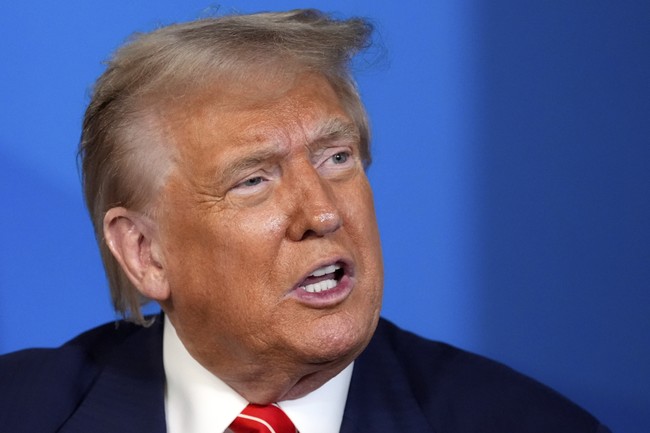
After being teased all afternoon with a story tying Donald Trump to Jeffrey Epstein, the final product from the Wall Street Journal is out, and it’s… underwhelming at best.
The WSJ has gifted us another “exclusive” story that tells us absolutely nothing particularly new. This time, it’s about a letter allegedly from Donald Trump in Jeffrey Epstein’s 50th birthday album from 2003.
Let me break this down.
What We Actually Know
The Journal claims to have seen pages from a birthday album compiled by Ghislaine Maxwell in 2003—three years before Epstein was first arrested and long before any criminal allegations became public. The album allegedly contains letters from various wealthy individuals who moved in Epstein’s social circles.
According to the Journal, one page contains Trump’s signature on what they describe as a “bawdy” note with crude drawings. Trump categorically denies writing it.
“This is not me,” he said in response to the story. “This is a fake thing. It’s a fake Wall Street Journal story. I never wrote a picture in my life. I don’t draw pictures of women. It’s not my language. It’s not my words.”
That’s where the facts end and the speculation begins.
The Authentication Problem
Here’s what the Journal doesn’t tell you: They provide no evidence that this letter was authenticated. No handwriting analysis. No chain of custody documentation. No forensic verification. Just their word that they “reviewed” it among Justice Department documents.
The paper admits they don’t know “how the letter with Trump’s signature was prepared,” yet they’re comfortable plastering it across their front page anyway. If you can’t verify authenticity, why publish it at all?
The Context the Journal Ignores
This alleged letter dates to 2003—a full three years before any criminal allegations against Epstein became public. Palm Beach police didn’t begin investigating Epstein until March 2005, and he wasn’t arrested until 2006. In 2003, Epstein was viewed as a successful financier who threw lavish parties attended by politicians, academics, business leaders, and celebrities.
The birthday album reportedly included letters from Leslie Wexner (billionaire retail mogul), Alan Dershowitz (prominent attorney), Harvard economists, and others.
READ MORE: Dershowitz Reveals More As He Clarifies His Comments About the ‘Epstein List’
Bill Clinton appeared multiple times on Epstein’s flight logs. This was the social circle of wealthy Manhattan—morally questionable in hindsight, but entirely legal and socially acceptable at the time. Yet somehow, only Trump’s alleged contribution merits front-page coverage in 2025.
The Justice Department Has Spoken
The timing of this story is particularly rich. Just last week, Trump’s own Justice Department and FBI released a comprehensive memo concluding their “exhaustive review” found no evidence that Epstein maintained a “client list,” no evidence he blackmailed prominent individuals, and no evidence warranting investigation of “uncharged third parties.”
The memo specifically states investigators found “no incriminating ‘client list'” and “no credible evidence that Epstein blackmailed prominent individuals.” After months of promising revelations, the department concluded that “no further disclosure would be appropriate or warranted.”
In other words, there’s no there there. The conspiracy theories have been thoroughly debunked by the very administration supposedly trying to cover things up.
A Pattern of Irresponsible Reporting
This latest Journal story fits a pattern we’ve seen throughout Trump’s political career. Major media outlets report salacious allegations, often based on questionable sources or unverified claims, only to quietly walk them back months later when the initial frenzy has served its purpose.
The Journal itself has been increasingly hostile to Trump’s agenda, with its editorial board regularly attacking his policies on tariffs, immigration, and other key issues. The editorial board has called Trump’s tariff plans the “dumbest tariff plunge” and warned his policies could be “the biggest economic policy mistake in decades.”
When the same publication that calls Trump’s economic policies “remarkably poor judgment” suddenly discovers a 22-year-old party invitation, we should ask whether this represents serious journalism or partisan opportunism.
The Real Story They’re Missing
While the Journal wastes column inches on decades-old party planning, House Republicans just blocked Democratic attempts to force the release of additional Epstein files, and Trump himself has told Americans it’s time to “move on” from the Epstein obsession.
The president is trying to govern, implementing immigration enforcement, negotiating trade deals, and addressing real challenges facing American families. But instead of covering policy substance, we get archaeological digs through old party invitations.
Time to Move Forward
The Justice Department, Trump’s own Justice Department, has thoroughly investigated these matters and found no criminal conspiracy. The FBI has concluded there’s no client list, no blackmail scheme, and no grounds for further investigation.
Sometimes the simplest explanation is correct: wealthy people socialized together in Manhattan twenty years ago, some of them turned out to be criminals, and those connections don’t automatically implicate everyone who knew them.
President Trump has a job to do, and so does the press. Neither is served by endlessly relitigating social connections from an era when Epstein was still viewed as a respectable financier.
The Wall Street Journal should focus on actual news—policy impacts, legislative developments, and substantive governance issues that affect American lives. Save the conspiracy theories for the tabloids.
It’s time to move on to the real work of governing America.
















